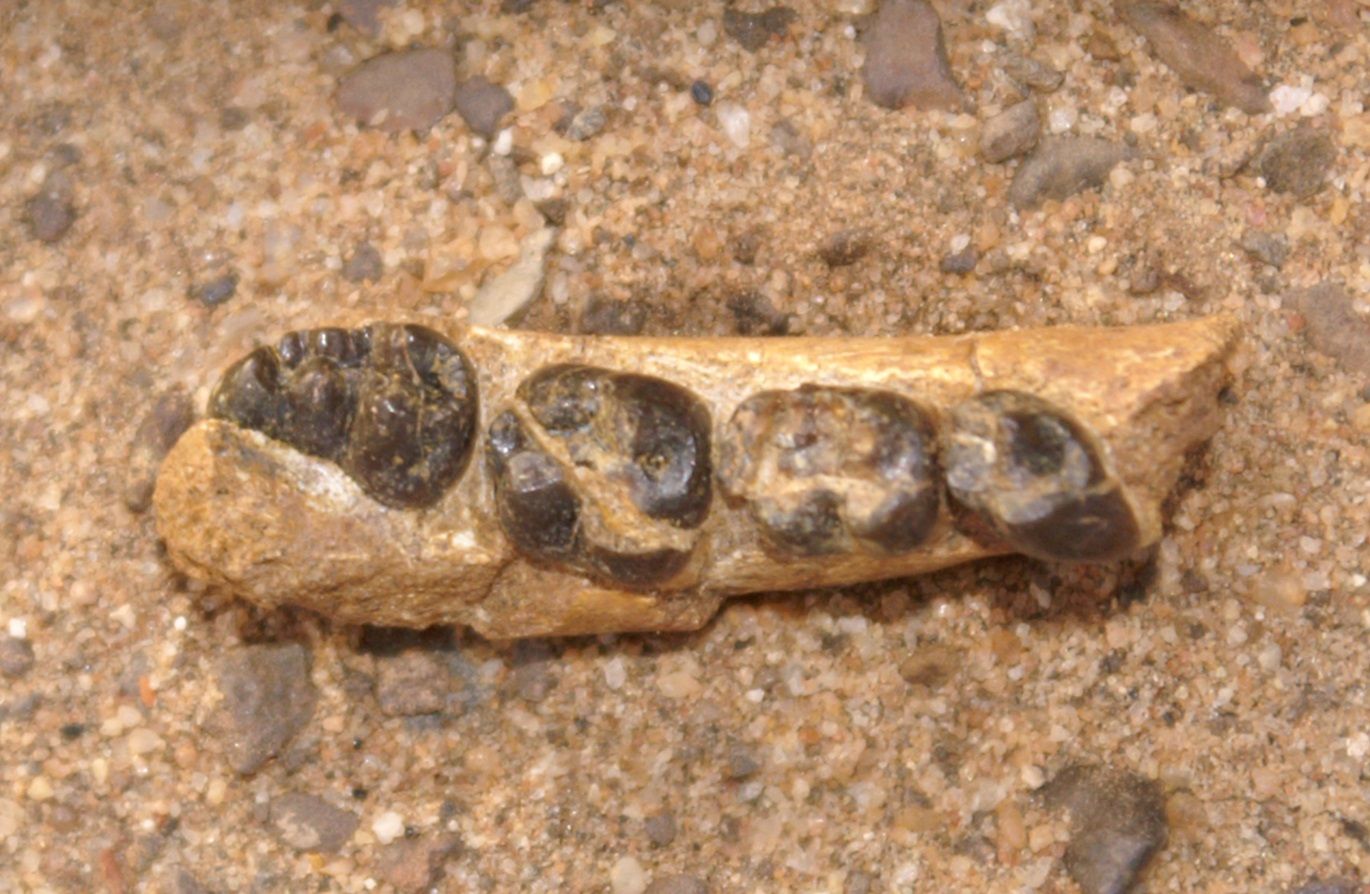
Researchers have discovered an ancient species of Old World monkey in the badlands of northwest Kenya, according to a study published in the Proceedings of the National Academy of Sciences.
A team from the University of Texas at Austin, the National Museums of Kenya and other institutions found 22-million-year-old teeth in three different sites, enabling the researchers to identify a new species, now named Alophia metios.
The new find could help shine a light on the origin of Old World monkeys (Cercopithecoidea), the largest family of primates—comprising 138 species native to Africa and Asia, including baboons and macaques—which the researchers describe as "one of the great evolutionary success stories."
"Old World Monkeys, apes and humans all belong to the 'anthropoid' group of primates, which means 'the primates that resemble humans,'" Wake Forest University's Ellen Miller, another author of the study, told Newsweek. "Within this group, 'monkey' is a generic term for anthropoids that have a tail. Apes are anthropoids who don't have a tail."
Important aspects of the early evolution Old World monkeys remain shrouded in mystery, as there are only two fossils representing them from before 8 million years ago—a 19-million-year-old tooth from Uganda and a 25-million-year-old tooth from Tanzania. Thus, the latest discovery helps to fill in a 6-million-year gap in the Old World monkey fossil record.
"Geneticists tell us that the Old World monkey and ape lineages split from each other about 30 million years ago, but we have never really known anything about the origin of monkeys, because, until now, the fossil record for almost the first 12 million years of their evolution consisted of only two teeth—one from Tanzania [25 million years old] and one from Uganda [19 million years old,]" Miller said. "So the discovery of Alophia [22 million years old] is helping to answer one of the big unsolved mysteries in primate evolution."
"The team working at Nakwai, in the Turkana region of Kenya, found three specimens of this fossil monkey," she said. "The type specimen is a four-tooth jaw that shows us what the chewing teeth looked like. There is a second sub-adult specimen that has two of these chewing teeth. And another jaw has three teeth, but they are pretty worn and abraded."
The region in which the researchers found the monkey teeth is very arid today. But millions of years ago, it was a verdant woodland which was home to several other animals. During their excavations there, the team also found the remains of numerous other creatures, including reptiles and early elephants.
The monkey teeth described in the new study are more primitive than those found in later Cercopithecoidea specimens. So primitive in fact that when the team first showed them to other scientists, they were told that they belonged to a pig not a monkey. Specifically, they lack a key dental trait of the molar teeth, known as bilophodonty, that is present in all modern-day Old World monkeys.
"All Old World monkeys are united by sharing a signature feature, which is called 'bilophodonty.' This just means that their molars (the chewing teeth) have four cusps on them and there are two crests on each tooth—one crest connecting the front pair of cusps and another connecting the back pair," Miller said. "The evolutionary novelty of bilophodonty is key to the success of this group, because in evolutionary terms, this dental pattern is easily tweaked so that the teeth can process lots of different kinds of foods."
"You would think then that the trait responsible for a group's success evolved when the group originated, but Alophia (which means 'without lophs') shows us this was not the case," she said. "Instead, the characteristic dentition of modern monkeys evolved long after the group first appeared."
Analysis of the fossilized teeth indicated that Alophia probably ate hard foods, such as fruits, seeds and nuts. But the researchers suggest that later Old World monkeys began to eat more soft foods, such as leaves, which could have driven the evolution of bilophodonty. This key trait enabled them to process a wider range of foods, thus contributing to their success.
"You can think of the modern-day monkey molar as the über food processor, able to slice, dice, mince and crush all sorts of foods," the University of Minnesota's Mercedes Gutierrez, an author of the study, said in a statement.
This article was updated to include additional comment from Ellen Miller.
Uncommon Knowledge
Newsweek is committed to challenging conventional wisdom and finding connections in the search for common ground.
Newsweek is committed to challenging conventional wisdom and finding connections in the search for common ground.
About the writer
Aristos is a Newsweek science reporter with the London, U.K., bureau. He reports on science and health topics, including; animal, ... Read more
To read how Newsweek uses AI as a newsroom tool, Click here.








